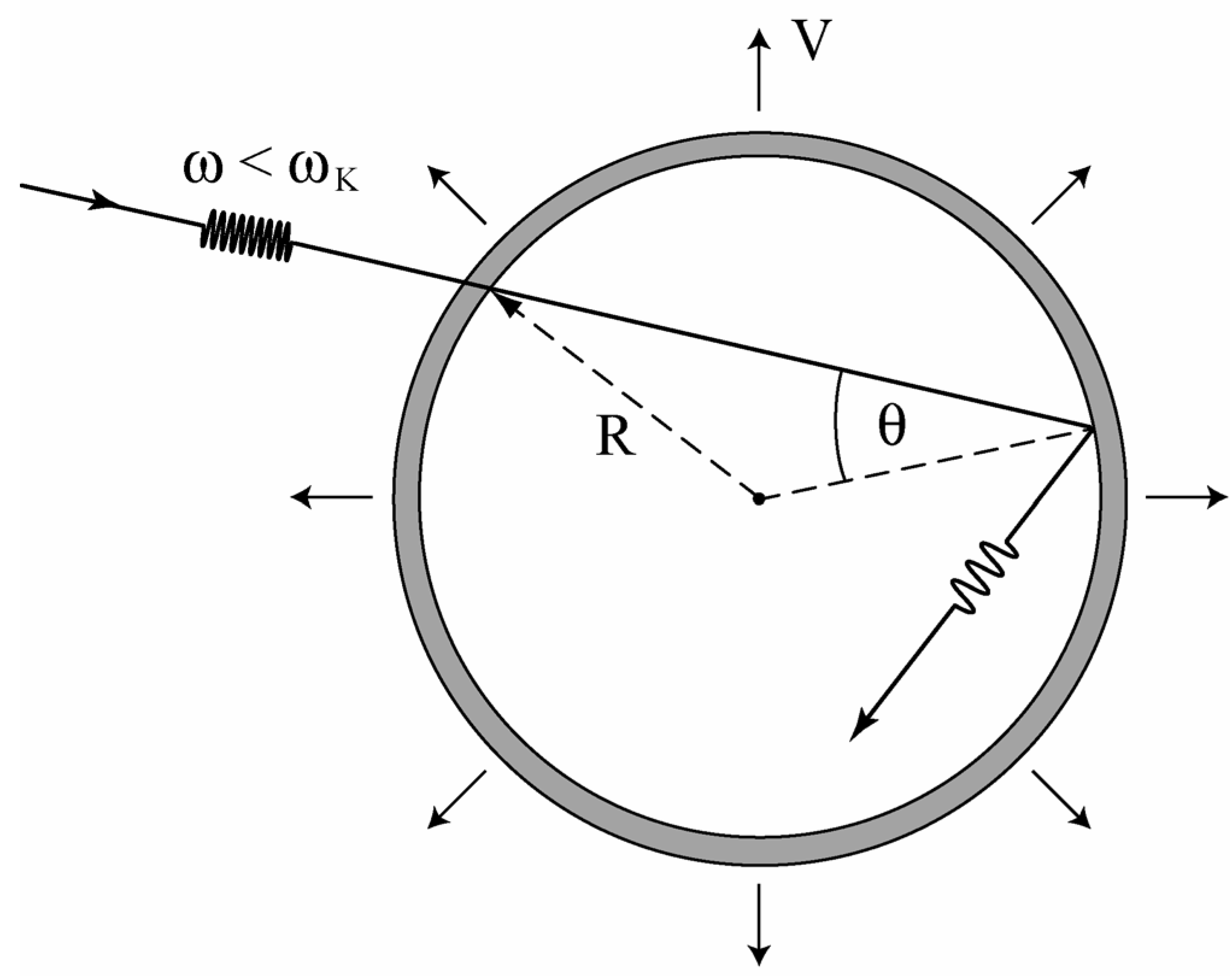On Expansion of a Spherical Enclosure Bathed in Zero-Point Radiation
Abstract
:Introduction
Cut-off frequency

Heat engine with cut-off frequency
Semi-quantitative relations
ZP radiation in a small cavity
Conclusions
Acknowledgments
References
- Ehrenfest, P. Welche Züge der Lichtquantumhypothese spielen in der Theorie der Wärmestrahlung eine wesentliche Rolle. Ann. d. Phys. 1911, 36, 91–181. [Google Scholar]
- Planck, M. Vorlesungen über die Theorie der Wärmestrahlung; 5. Aufl.; J. A. Barth: Leipzig, 1923; p. 136. [Google Scholar]
- Milonni, P. W. The Quantum Vacuum – An Introduction to Quantum Electrodynamics; Academic: Boston, 1994; p. 1. [Google Scholar]
- de la Peña, L.; Cetto, A. M. The Quantum Dice – An Introduction to Stochastic Electrodynamics; Kluwer: Dordrecht, 1996; pp. 99, 86. [Google Scholar]
- Boyer, T. H. Derivation of the Blackbody Radiation Spectrum without Quantum Assumptions. Phys. Rev. 1969, 182, 1374–1383. [Google Scholar] [CrossRef]
- Spruch, L. Long-Range Casimir Forces; Levin, F. S., Micha, D. A., Eds.; Plenum: New York, 1993; p. 1. [Google Scholar]
- Lamoreaux, S. K. Demonstration of the Casimir Force in the 0.6 to 6 μm Range. Phys. Rev. Lett. 1997, 78, 5–8. [Google Scholar]
- King, R. W. P.; Mimno, H. R.; Wing, A. Transmission Lines, Antennas and Wave-Guides; McGraw-Hill: New York, 1945; p. 297. [Google Scholar]
- Zemansky, M. W.; Dittman, R. H. Heat and Thermodynamics, 6th ed.; McGraw-Hill: New York, 1981; p. 175. [Google Scholar]
- Weyl, H. Das asymptotische Verteilungsgesetz der Eigenwerte linearer partieller Differentialgleichungen auf die Theorie der Hohlraumstrahlung. Math. Ann. 1911, 71, 441–479. [Google Scholar] [CrossRef] [Green Version]
- Baltes, H. P. Comment on Blackbody Radiation in Small Cavities. Am. J. Phys. 1974, 42, 505–507. [Google Scholar]
© 2004 by MDPI (http://www.mdpi.org). Reproduction for noncommercial purposes permitted.
Share and Cite
Mares, J.J.; Spicka, V.; Kristofik, J.; Hubik, P. On Expansion of a Spherical Enclosure Bathed in Zero-Point Radiation. Entropy 2004, 6, 216-222. https://doi.org/10.3390/e6010216
Mares JJ, Spicka V, Kristofik J, Hubik P. On Expansion of a Spherical Enclosure Bathed in Zero-Point Radiation. Entropy. 2004; 6(1):216-222. https://doi.org/10.3390/e6010216
Chicago/Turabian StyleMares, Jirí J., Václav Spicka, Jozef Kristofik, and Pavel Hubik. 2004. "On Expansion of a Spherical Enclosure Bathed in Zero-Point Radiation" Entropy 6, no. 1: 216-222. https://doi.org/10.3390/e6010216
APA StyleMares, J. J., Spicka, V., Kristofik, J., & Hubik, P. (2004). On Expansion of a Spherical Enclosure Bathed in Zero-Point Radiation. Entropy, 6(1), 216-222. https://doi.org/10.3390/e6010216



